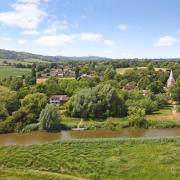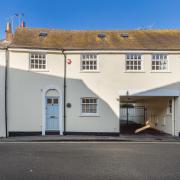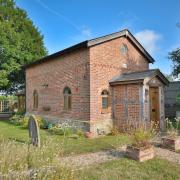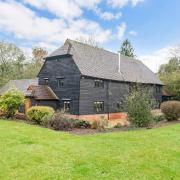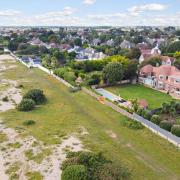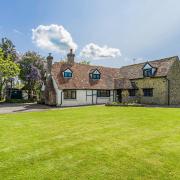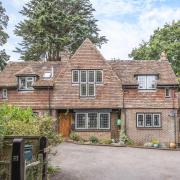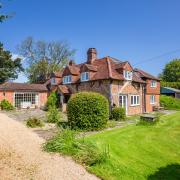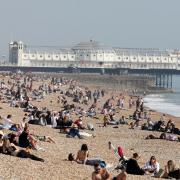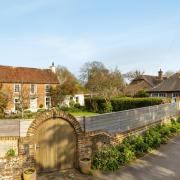Duncan Hall investigates the East Sussex town being transformed by a growing influx of artists
Getting there
Hastings is on the A21, coastal A259 and A2101 roads. Hastings and St Leonards are served by three railway stations – Hastings, St Leonards Warrior Square and West St Leonards station. There are regular services to London Charing Cross, London Victoria, Ashford International, Brighton and Ore. Hastings and St Leonards are extremely well-served by Stagecoach buses which operate across the town, as well as services to Rye, Eastbourne, Battle and Hawkhurst. There is a National Express service which runs between London Victoria and Bexhill once a day.
History
The received wisdom when it comes to Hastings’ amazing rebirth is that it is like Brighton used to be 20 years ago. The increasing prices in Brighton and Hove have seen artists and creatives flood east to the more affordable housing along the sea.
And it would be easy to draw comparisons between the city of Brighton and Hove and Hastings. Both have grown from humble origins where fishing was the main activity. Both are built around steep hills leading down to a pebbly beach which has been a tourist hub for the past two centuries. And like Brighton with Hove, Hastings has practically merged with St Leonards to the west to create a much larger conurbation.
But while Brighton is a relative newcomer to the world stage, largely thanks to tourism, any former schoolchild knows the importance Hastings (or rather Battle) played in English history. It was the location of William the Conqueror’s first castle on English soil, whose ruins still overlook the town. The castle was damaged by a great storm in 1287 which saw the cliff-face fall into the sea ruining the harbour. Prior to the battle there is evidence of Bronze and Iron Age inhabitants and a Roman iron mine. It was first mentioned in writing as Hastingas in a 771 account of the victory of King Offa of Mercia over the Hastings tribe. Up until the 16th century it was one of the Cinque Ports which provided shops and men to guard the kingdom from attacks across the Channel. The town’s smuggling heritage is celebrated today in tourist attraction Smugglers Adventure in St Clements Caves.
As with Brighton stories of the health-giving properties of seawater saw Hastings develop as a tourist town in the 19th century, which saw the building of some of its more elegant areas including Pelham Crescent and Wellington Square. Its growth was increased by the arrival of the railways.
With the decline of the British seaside holiday because of cheap foreign travel Hastings suffered, not least because of its slightly more remote geography. Since 2002 there has been an extensive programme of regeneration, with the creation of Sussex Coast College and the seafront Jerwood Gallery among the new projects.
Annual festivals and events
Hastings celebrates May Day with a four-day Jack in the Green festival of Morris dancing, live music and a spring parade. And for the past eight years Hastings has been holding its own live music mardi gras, entitled Fat Tuesday, with events running from the Friday preceding Shrove Tuesday to a big celebration of fancy dress on the day itself. This year’s event saw 12 venues take part, with Britpoppers Dodgy headlining.
The September visual arts festival Coastal Currents gets bigger and better every year. It returns for 2017 from Saturday 2 September to Sunday 1 October offering a mix of open studios across the town and staged events. For the full programme visit coastalcurrents.org.uk.
As with much of East Sussex there is a big bonfire tradition, and 2017’s torchlit procession on Saturday 14 October runs from the Stade to a bonfire and fireworks display on the beach.
Another favourite Hastings calendar date is the Round Table’s three-day beer and music festival every July, which this year moved to a bigger location at The Oval.
Amenities
St Leonards has been battling against closures of banks and the crown post office over the past two years, but Hastings itself has all the modern amenities visitors to a tourist town should expect. Many of the shops are based in the Priory Meadow Shopping Centre which is home to many national chains including Boots, H&M and Marks and Spencer. The old town is more about independent shopping, with second-hand book shops, cafes and pubs in abundance.
In terms of cultural offerings Hastings has plenty, with the White Rock Theatre hosting both national touring shows, including Joe Pasquale in August and illusionist Derren Brown in September, as well as a youth theatre production of Oliver! in August. Film-lovers have the choice of the Odeon in Queens Road, the independent Electric Palace in High Street, or the Kino Teatr in Norman Road, St Leonards which hosts a varied arthouse and mainstream programme. There is also the luxurious Sussex Exchange in Queensway, St Leonards, which boasts an in-house restaurant.
As well as the castle, which can be reached by the West Hill Cliff funicular, Hastings history is covered in the Museum and Art Gallery in John’s Place, Bohemia Road, which is next door to the Summerfields Leisure Centre offering swimming, fitness classes and a gym. There are plenty of open spaces too, including Hastings Country Park which can be reached by the East Hill Cliff Railway.
The former fishing beach on the seafront was transformed in 2012 with the addition of contemporary art space the Jerwood Gallery and the neighbouring outdoor performance area The Stade Open Space.
And once thought lost after a devastating fire, Hastings Pier reopened to a great fanfare last year with a new design which won three Royal Institute of British Architects (RIBA) awards. The space is now used for everything from live concerts and cinema screenings to pilates and yoga classes.
Meet the neighbours
A three-bedroom ground floor flat in the Grade II listed childhood home of codebreaking genius Alan Turing is currently on the market in St Leonards for just £250,000. He was educated at St Michael’s School in Charles Road, St Leonards.
Another great mind, inventor of television John Logie Baird, moved to Hastings in 1922 where the following year he made the world’s first image transmissions.
Author Robert Tressell used his hometown of Hastings as the model for Mugsborough in his classic socialist work The Ragged Trousered Philanthropists. Fellow author Catherine Cookson lived and worked in Hastings for most of her life, first coming to the town to work as laundry manageress at the workhouses.
Other famous names with links to the town include Elizabeth Blackwell, the first woman in the world to qualify as a doctor who retired there in 1880, the Duke of Wellington Sir Arthur Wellesley, Dante Gabriel Rossetti, Queen Adelaide, Lewis Carroll, actress Gwen Watford and Sir Henry Rider Haggard of King Solomon’s Mines fame.
Comedian Jo Brand was brought up in Hastings, as was folk singer Shirley Collins, Spice Girls manager Simon Fuller, playwright David Hare and Madness frontman Suggs.
Today former Children’s Laureate Quentin Blake is among the many celebrities, writers, artists and musicians to have homes in Hastings.
Council
Hastings Borough Council is based in the town hall in Queens Square. It comes under East Sussex County Council. In June Hastings and Rye returned Conservative Home Secretary Amber Rudd as its MP by a narrow margin of 346 votes over her Labour rival.




